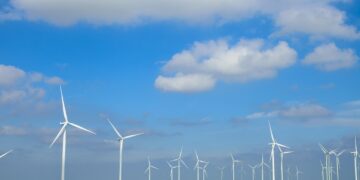The Impact of Melting Ice on Our Planet
Ice melting at the poles, glaciers, and permafrost regions has profound implications for the global ecosystem and for populations worldwide. In this detailed discussion, we aim to explore the causes, consequences, and commonly asked questions regarding the melting ice phenomenon. Comprehending these could be crucial to forming strategies for adaptation and mitigation.
Understanding Ice Melting
The phenomenon of ice melting primarily includes the reduction of ice masses found in polar ice caps, glaciers, and permafrost due to rising global temperatures. This process has accelerated remarkably, according to recent studies, particularly over the last few decades.
Causes of Increased Ice Melting
Several factors contribute to the accelerated rate of ice melt around the globe:
- Global warming: A significant driver of melting ice is an increase in global temperatures stemming primarily from human activities, especially fossil fuel burning and deforestation, enhancing the greenhouse effect.
- Ocean temperature rise: Warmer ocean waters erode ice from below, particularly affecting ice shelves and sea ice.
- Albedo effect: Ice reflects sunlight, but as ice melts and uncovers darker surfaces like oceans or land, these surfaces absorb more heat, leading to further warming and more melting.
Impacts of Melting Ice
The consequences of ice melting are widespread ranging from environmental to socio-economic factors:
- Sea level rise: Melting glaciers and polar ice contribute to rising sea levels, threatening coastal communities and causing coastal erosion.
- Temperature regulation: Ice plays a critical role in the Earth’s climate system, reflecting sunlight and helping keep the polar regions cool. Reducing ice cover disrupts this balance, potentially further accelerating global warming.
- Loss of habitat: The melting ice affects wildlife, especially polar species such as polar bears and penguins, which rely on ice-covered regions for breeding, hunting, and shelter.
Frequently Asked Questions about Melting Ice
How much has the ice melted in recent years?
Studies indicate significant ice loss, particularly in the Arctic where sea ice is disappearing at an alarming rate. Satellite observations reveal that the Arctic has been losing roughly 13% of its ice per decade since 1980.
Can we reverse the melting of ice?
Halting the trend of melting ice is challenging but possible through comprehensive international cooperation aimed at reducing greenhouse gas emissions. Transitioning to renewable energy, enhancing energy efficiency, and promoting a global sustainable lifestyle are essential steps.
What are scientists doing about this issue?
Scientists around the world are conducting continuous research to monitor climate changes and the melting of ice. Development of climate models to predict future changes and studies aimed at understanding the interactions between ice, ocean temperatures, and climate dynamics are ongoing. These insights are crucial in advising policy makers and the public.
Case Studies and Real-Time Evidence
To illustrate the dramatic changes, here are a few examples from around the world:
- The Arctic: The reduction in the size of the Arctic ice cap is one of the most direct indicators of global warming.
- Glacier National Park: In Montana, USA, the park has experienced a significant reduction in the number of glaciers from 150 in 1950 to fewer than 30 today.
- Antarctica Ice Mass: Antarctica, particularly the West Antarctic Ice Sheet, has seen increased rates of ice mass loss, contributing to global sea level rise.
Conclusion
The melting of polar ice caps, glaciers, and permafrost is a clear indicator of the rapid changes occurring on our planet due to global warming. Addressing this requires a concerted global effort to mitigate the sources of warming. Engaging in informed discussions, spreading awareness, and adopting policy measures can help safeguard our environment for future generations.
For continued updates and detailed reports on environmental changes, stay informed through reputable scientific resources and publications.





